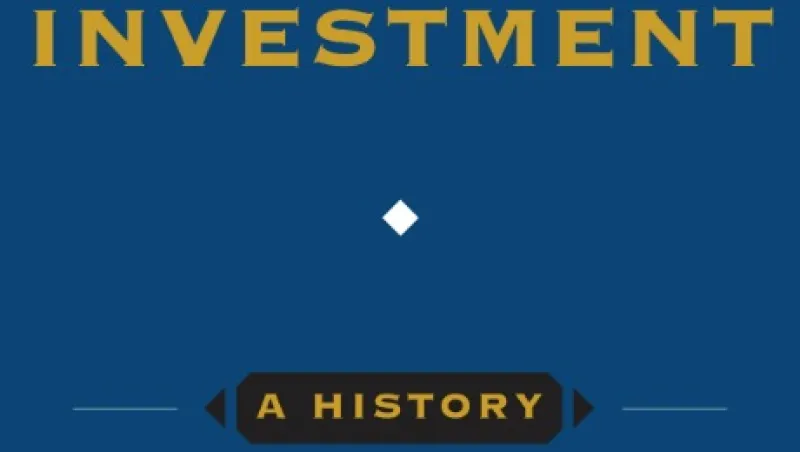If you’ve ever contemplated the 21st century investing landscape, with its opulent array of products, asset classes, regulations, investment styles and players, and wondered how we got here, there’s a book with answers. Investment: A History, released by Columbia Business School Publishing in February, is a short name for a big aspiration: to map the transformation of asset allocation over the past 5,000 years.
Authors Norton Reamer and Jesse Downing tackle this task head on. From the beginnings of investment in Mesopotamia in the 4th millennium B.C., when agricultural land was the only asset and the elite were the only investors, to the rise of hedge funds and exchange-traded funds in recent decades and the extension of investing activities to the humblest citizens, the writers provide not only the big picture but also the small details.

The overriding theme is the progressive democratization of investing as it evolved from the sole province of royalty and other nobles to something practiced today by millions of ordinary retirement savers, and the authors drop savory tidbits of information along the way. One such nugget: The military governors of the 3rd Dynasty of Ur in Mesopotamia imposed a tax called gun mada, a tribute from provinces paid to Sumer. The result renders more palatable what otherwise might be an overly arcane discussion of topics such as systems of Roman estate management.
Reamer is a former chief investment officer and CEO of Putnam Investments in Boston. Co-author Downing, who graduated with his bachelor’s in economics and math from Harvard University in 2013, works as an analyst for Baupost Group, another Boston-based firm, led by legendary hedge fund manager Seth Klarman. Beyond the investing savvy their résumés suggest, the authors also show considerable historian chops. Descriptions of developments such as the creation of the first joint-stock company (the Dutch East India Co.) in the early 1600s and events like the 1792 signing of the Buttonwood Agreement, which inaugurated what would become the New York Stock Exchange, are presented with ample annotation. The global scope of research is more impressive still, as they detail how such phenomena as usury restrictions and partnership forms developed in individual civilizations around the world.
Development of regulation is another important theme in Investment. The authors credit the creation of systems of rules and oversight with enabling investors to confidently commit resources. They also discuss regulatory failures such as episodes of misbehavior from 18th-century market manipulator William Duer to the modern likes of Ponzi schemer Bernard Madoff and rogue trader Nick Leeson. Rather than just recounting chilling tales of credulity and malfeasance, the authors categorize cases by type and suggest regulatory, personal and other traits that allowed each variety of misbehavior to occur.
Much attention rightly goes to the past 50 years or so, when the sophistication and variety of investment products, providers and participants multiplied as much or more than in the previous few millennia combined. The biggest development in this span, in the authors’ view, is the emergence of retirement as an accepted phase of life. The resulting growth of retirement savings, coupled with the expansion of mutual funds as a place for savers to put funds, generates the book’s most eye-catching data point. The authors report that equity mutual fund assets under management grew 135-fold from 1980 to 2010. That number is now roughly $16 trillion.
Although Investment deals frankly with cases of malfeasance and acknowledges that nearly all religions at one point prohibited at least some form of charging interest — placing a bedrock investment activity under something of a moral cloud — the general tone is understandably kind to investing’s objectives and means. Toward the end, however, a note of questioning bordering on disapproval arises in a discussion of the multibillion-dollar annual compensation paid to some hedge fund managers in recent years. The authors inquire as to whether these payoffs are justified, and seem pleased to report pressure on fees is eroding the traditional 2 percent of assets and 20 percent of performance compensation for hedge fund managers.
Investment is not without shortcomings. There is very little discussion of the role of technology in investing — even in a final chapter focused on future prospects. The book is a history, so it’s not surprising that the authors devote only modest attention to what comes next. Nonetheless, aside from a brief mention of computers as essential for the development and application of quantitative management strategies, and a similarly succinct nomination of algorithmic strategies as potentially important, the authors pay little attention to technology and the way it is remaking the industry. With automation representing perhaps the biggest career threat to the financial professionals who are the book’s presumptive readers, this is a curious omission.
The authors ambitiously set out to encapsulate the entire human experience of committing resources in the expectation of gain. All told, Investment: A History meets its objective with admirable clarity, accessible detail and intelligent organization. A reader’s time and energy devoted to it are likely to yield competitive returns.





